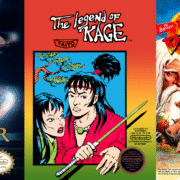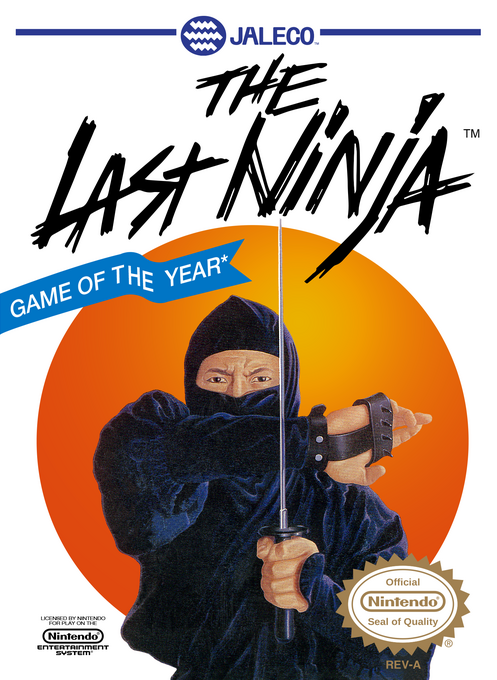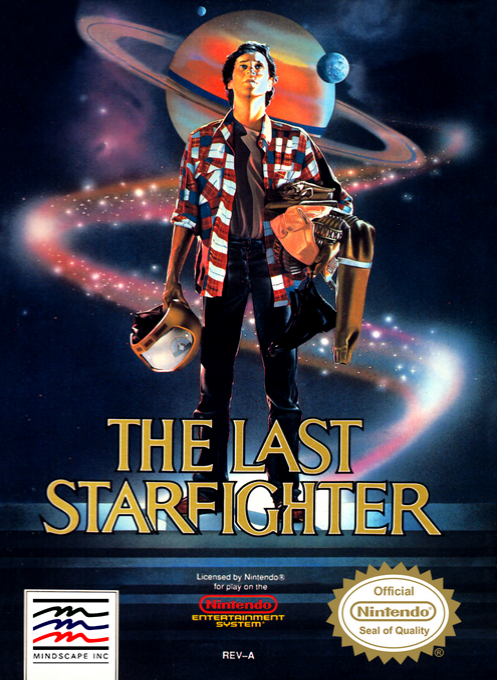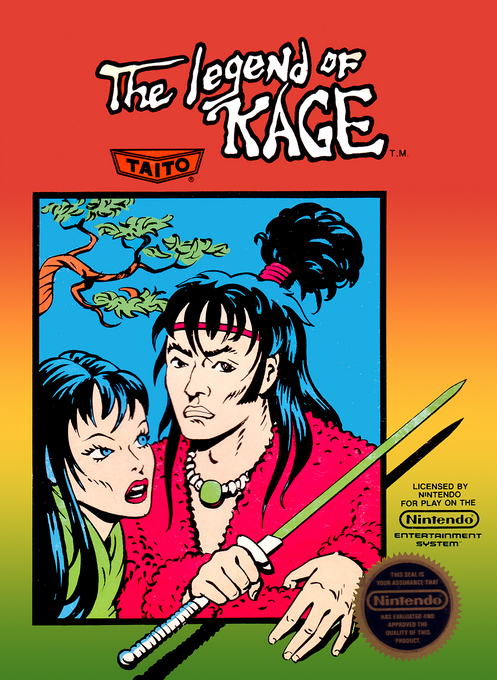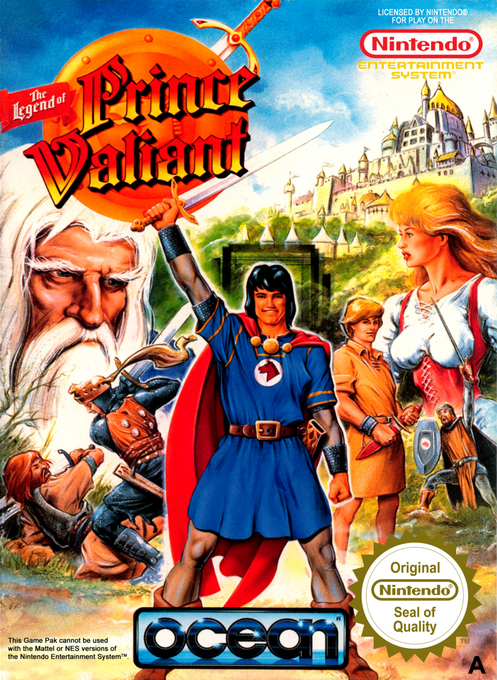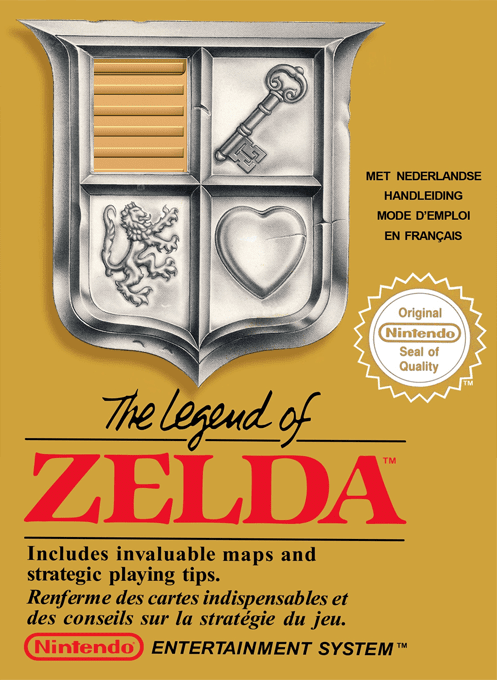Sometimes the alphabet delivers thematic clustering that feels almost intentional. This batch of games opens with two “Last” titles that couldn’t be more different in quality, then transitions into a trio of “Legend” games that showcase the NES at its best. What starts as a mixed bag quickly transforms into a celebration of hidden gems and undisputed classics, proving that even this deep into the library, the NES still has surprises waiting—and reminders of why certain games became legendary in the first place.
This episode also marks a triumphant return after technical difficulties forced a complete re-recording, resulting in improved gameplay and deeper insights into games that initially stumped the players. The silver lining? Getting genuinely good at titles that deserved a second chance, transforming frustration into appreciation and revealing why some overlooked games deserve reconsideration.
Last Ninja, The – 1/1
| Genre | Release | Developer | Publisher |
| Isometric Action Adventure | 1991 | System 3 Software | Jaleco |
Jaleco’s 1991 port of System 3’s European computer classic drops players into an isometric action-adventure where a ninja navigates environments ranging from Central Park to various indoor locations. Originally developed for the Commodore 64 in 1987 and renowned for its groundbreaking graphics and atmospheric music on home computers, the NES version attempts to translate that ambitious design to Nintendo’s hardware.
The game’s most distinctive—and divisive—feature is its isometric perspective combined with directional movement that feels “relative” to the character rather than the screen. Combat involves punching and kicking enemies while solving environmental puzzles, including the infamous second-room stumper: “I had to look up how to do this… the guy punched the wall.” The game features the audacious premise of a ninja operating in broad daylight in the park with Statue of Liberty imagery confirming the New York setting.
Initial frustration gave way to appreciation after understanding the mechanics: “Now that we understand that there’s progress, I am curious how this game plays out. I like the vibe. It’s like funny in an ironic way.” The isometric movement becomes intuitive with practice, and the game’s bizarre tone—combining ninja stealth with daytime public brawling—creates unintentional comedy. As noted, “If I had this game as a weekend rental, I would be into it.” After initially rating it 0/1 due to confusion, the revised verdict recognizes its quirky appeal: 1/1.
Last Starfighter, The – 0/1
| Genre | Release | Developer | Publisher |
| Horizontal Shmup | 1990 | Graftgold | Mindscape |
Brøderbund’s 1984 adaptation of the cult film exemplifies everything wrong with rushed movie tie-in games. This horizontal space shooter traps players in a sluggish, unfair experience where invisible bullets and instant-death towers create infuriating cheap deaths.
The gameplay involves piloting a ship that can accelerate and decelerate—even reversing direction when too slow—while attacking enemy vessels in what should be a Star Wars trench run experience. The fundamental problem: You can’t see the bullets. Combined with black tower obstacles that blend into the background and kill on contact, the game becomes an exercise in memorization rather than skill.
“The first three times you get killed by it, you don’t know why you died.”
The controls feel sluggish, enemy patterns are unpredictable, and the game lacks any satisfying progression. The verdict is harsh but earned: “I absolutely hate this game so much… I’m disgusted by this game and I hate the people who made this.”
The conversation even includes a tangent about the film itself and similar era sci-fi movies like Flight of the Navigator, but no amount of nostalgia can redeem this cynical cash-grab. Final rating: 0/1, with commentary that it’s “responsible for a great number of broken controllers and lowered self-esteem.”
Legend of Kage, The – 1/1 💎
| Genre | Release | Developer | Publisher |
| Ninja Action Platformer | 1985 | Taito | Taito |
Taito’s 1985 arcade port delivers exhilarating ninja action that captures the fantasy of Eastern martial arts cinema. Players control a nimble warrior (who is ambiguously gendered) who must rescue a kidnapped princess while performing gravity-defying leaps through forest environments.
The game’s defining feature is its spectacular jump mechanics—soaring impossibly high into trees creates “Crouching Tiger, Hidden Dragon” moments that feel like “a lucid dream.” Combat involves throwing shurikens at enemy ninjas while navigating vertically and horizontally scrolling stages. The game features a satisfying clear-the-screen objective where killing all visible enemies advances the stage, then transitions to climbing sequences. Comparisons to the earlier-covered Demon Sword reveal shared DNA, though Legend of Kage predates it and focuses more purely on ninja fantasy. The tree-climbing animation, the satisfying arc of thrown weapons, and the sheer joy of movement create an experience that “feels like a ninja.”
The game even received a Nintendo DS sequel that cleverly used both screens for jumping between levels. The consensus is clear: “I think this might be a hidden gem.” Nobody in the players’ childhood circles owned it, it’s rarely discussed in retro gaming discourse, and it offers intuitive, immediately enjoyable gameplay. Verdict: 1/1, certified hidden gem.
Legend of Prince Valiant, The – 1/1 💎
| Genre | Release | Developer | Publisher |
| Action Platformer | 1992 | Ocean | Ocean |
Ocean’s 1992 action-platformer based on the comic strip and animated series proves that licensed games can deliver quality experiences. Players guide the titular prince through treacherous marsh environments while battling archers, spear-throwers, and eventually barbarian chargers on a quest to find Camelot.
The game opens with surprisingly detailed story text explaining that “Valiant encounters a marsh… which he must cross if he is to realize his dream of finding Camelot.” Gameplay involves throwing daggers (no crouching attacks or jumping attacks, adding strategic challenge), navigating collapsing platforms, and swinging on ropes with impressive and “intuitive feeling” grappling mechanics. The level design introduces variety through different enemy types and environmental hazards, while boss battles provide genuine challenge—including an 18-hit bat creature and a fire-breathing beast guarding the marsh exit.
The game evokes Ninja Gaiden comparisons: “Obviously Ninja Gaiden’s much snappier and quicker and better… but I already played Ninja Gaiden and it’s not hidden.” What makes Prince Valiant special is its depth: “You’re doing a lot of different stuff. It’s not just walk forward and hit.” The combination of precision platforming, enemy variety, and satisfying progression creates something genuinely worthwhile. “I’ve legitimately never heard of that game… that’s a hidden gem for sure.” Final rating: 1/1, certified hidden gem.
Legend of Zelda, The – 1/1
| Genre | Release | Developer | Publisher |
| Action RPG | 1986 | Nintendo R&D4 | Nintendo |
Nintendo’s 1986 masterpiece needs little introduction—the gold cartridge that defined action-adventure gaming and established a franchise that continues to innovate today.
Shigeru Miyamoto designed the game to recreate his childhood forest exploration experiences, creating an open-world adventure where players guide Link through Hyrule to rescue Princess Zelda from Ganon. The game’s revolutionary features include non-linear exploration, hidden secrets requiring experimentation (burning bushes, bombing walls), and battery-backed save files that enabled shared progress between friends: “If I borrowed my friend’s game, I could play our file… we’re trying to advance our save. That’s an experience I’ve never had in any other game ever.”
The episode includes discussion of quality-of-life ROM hacks like Legend of Zelda Redux that modernize texture indicators and mapping while preserving the core experience.
Miyamoto’s design brilliance extends to small details like arrow mechanics—instead of inventory management, each arrow shot simply costs one rupee: “That’s shorthand for you buying arrows, but instead of having you walk to a shop to buy 50 arrows… it just takes a dollar away from you every time you shoot one.” The game remains very playable today unlike some contemporaries (Metroid on NES is deemed “insufferable,” though Super Metroid and Metroid Zero Mission on GBA are recommended). The verdict is unanimous and obvious: “We all know Zelda’s a one out of one.” Final rating: 1/1, the “undisputed GOAT.”

